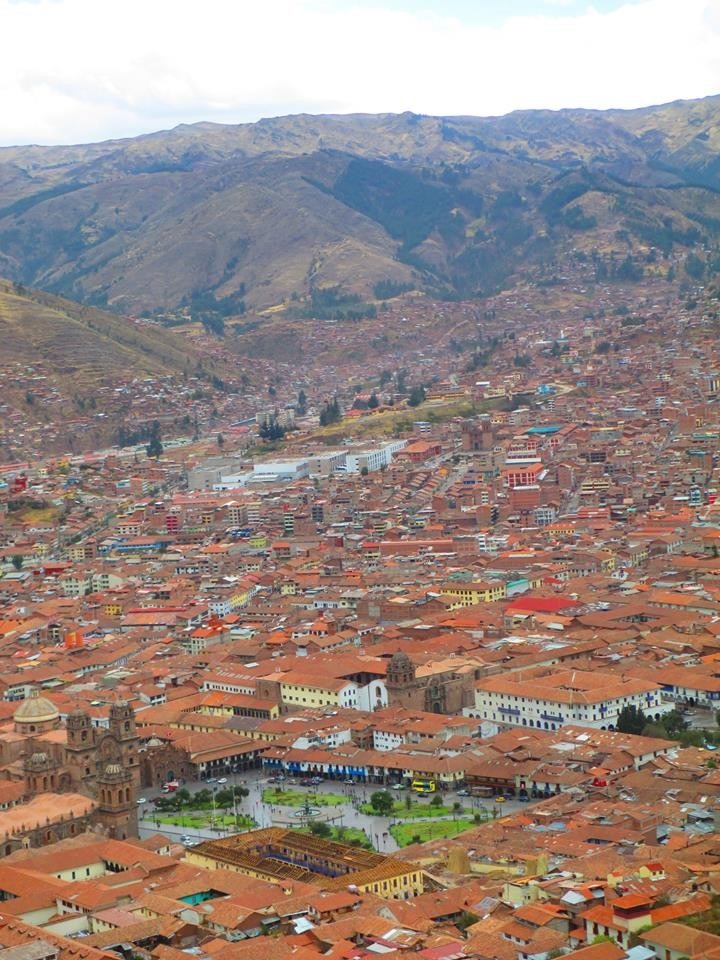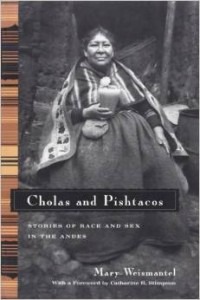In discussing language, primarily Quechua (runa simi) in the last couple posts, I have mainly been examining them abstractly or historically in the past, except with occasional interludes in the present. I have written about the dynamic practices of Quechua and language ideologies that were in many ways different from Europeans. In these cross-cultural encounters we can often glean interesting comparative details that might not be apparent otherwise… That being said, speaking abstractly of practical things can only go on for so long.
A few weeks ago, I completed an intensive Summer Quechua course in Cusco after spending nearly two months studying the language. At the start of the course, probably despite my wiser judgment, I had an eager and excited impatience, wanting to consume every single word, etching it into my memory to remain there upon a moments’ recollection. While there are definitely many gifted polyglots, I am not one of them, and I reminded myself that in learning Quechua I must embrace time and patience. And crucially, one must be open to practice, make mistakes, and learn.
Yet for the first few weeks I couldn’t even converse. There was a chasm between my passive recollection and that active response to communicate. How then could I even hope to interact at all? Like many things, my knowledge and ability of Quechua would develop unevenly, with good moments and plenty of stretches of lost cluelessness and frustration. As it is said, pisi pisimanta (little by little).
How does one practice Quechua (outside the classroom)? In many areas of Peru and the Andes, you cannot just go up to someone and assume they speak Quechua (the question also complicates and broadens to what assumptions should even be made – would they even want to speak Quechua with me, and so on). Fortunately, Cusco, for various reasons (much of which I have mentioned before here and here), is one of the places today where a large portion of the population still speaks Quechua, and one can hear it spoken throughout the streets and in certain neighborhoods and settings. As such, there are plenty of opportunities to speak Quechua in Cusco. Moreover, engaging in Quechua is much more than speaking mere words, but entails a universe of meanings and social implications that emerge through performative encounters.

My teacher, a kind and perspicacious woman from a town outside of Cusco, would always emphasize the interpersonal and discursive dimensions of Quechua. She would speak of the affective character of Quechua that would go beyond words and inform the fabric of social interactions. It is an interpersonal, contextual, respectful and intimate language. Spoken in all tones wrought in the thrall of emotion and influences, conversations in Quechua are often quiet, personal exchanges, and of course the context of the encounter is of all importance as well – whether the open road (a dubious space, between and betwixt towns), field, home, or market. Quechua is a spoken language.
In fact, before Spanish colonialism Quechua was not written as it is today in Roman alpha-numerals. Today there remain countless variations of spelling and terminology reflecting the continued importance of locally spoken regional dialects, not to mention the influences of Spanish colonialism.
So, very soon into the class we were preparing to practice outside the room, and interact in markets and a chicheria [a place that sells chicha (maize beer), locally and independently produced].
Markets are one of my favorite places, and especially in Peru! The smells of the market are pungent and the sites are colorful and abundant. They are these amazing spaces of conjuncture and life, where products and people from all areas converge and shrewd businesswoman often line the walls and fill the vendor and restaurant stands. The Andean market woman is a leading character in the Andean historical landscape, ambivalently known as a cholita (a complex and often pejorative term of colonial origin). She wears a large, robustly layered skirt (pollera), along with a classic bowler cap perched on the top of rich brown hair parted into two long and lovely braided ponytails. Smart, clever, and with a good sense of humor, these women are savvy navigators of the contours of the market, and often a pleasure to chat with (see Weismantel 2001 for a longer discussion, also check out “Bolivian Cholita Wrestling” for another example of the complexity of gender and race).

My first endeavor really speaking Quechua at the market was with my teacher, who often assisted as translator, and the few other students in my class. I stumbled my way through buying a bag of coca leaves, asking where the leaves came from, inspecting them as I tried to get a reasonable deal, and asking for a llapa, a little extra on the top. The woman, clearly pleased with our Quechua and business, offered me two llapitas; speaking in Quechua she placed a handful of leaves in the bag saying, “this is so you may go well”, and reaching for another handful, she said, “so you may return here well and in prosperity.” From there, I would continue practicing when I could – in markets, stores, taxis, combis (vans) and the mountains and valleys surrounding Cusco, such as the Sacred Valley.
A question worth asking, then, is what does speaking Quechua do?
Speaking always elicited a myriad of responses. In the market, many women upon hearing me speak Quechua would look up pleasantly surprised and wryly smile, inquiring into where I am from and where I am learning Quechua. Market ladies sitting nearby with their bags of produce would look inquisitively with an amused glint. The women cajole and tease back. In certain cases, especially when appearing as a single male, they would ask myself or another male classmate – with a straight face as other women giggled around them – to accompany them to their town – for there are plenty of attractive girls to meet, or how they too would be happy to have a little gringo man of their own. When traveling with my girlfriend, they would ask when we are getting married, and if they can be invited. The rare Quechua speaking gringo was often a source of amusement and speculation, offering a nice interlude in the long workday. However, by no means was Quechua, or my own use of it, enthusiastically embraced.
In some cases, others would shrug off the Quechua speaking Spanish back. Once I asked, in Quechua, if the woman spoke Quechua, she brusquely responded, “si, hablo Quechua” (yes, I speak Quechua). This led the lady selling cheese next to her to start chuckling, and repeat her response with amusement recognizing its irony – yes, she speaks Quechua, though talking in Spanish.
Something important to consider here is how Quechua historically has been a marginalized and prejudiced language, influencing its practice and reception to this day. Despite this dominant history, the majority of the time I interacted with Peruvian Quechua speakers or told people that I was studying Quechua I would find a great bolster of encouragement for continuing to learn Quechua. People were nearly always supportive. In conversations, even though, I would stumble along, exhausting my words soon after, it was always a very rewarding experience. People take great pride and flattery in one’s interest in Quechua and recognize the practice and effort in learning and exploring the language and culture.
Admittedly, by the end of the Summer I continued to struggle beyond practical and basic expressive phrases and descriptions. Grappling at words, I would often slip back into Spanish. Though, moving back and forth through Spanish, it was often that the interaction was different than if I had only spoken Spanish.
Whether I was in a combi or market in the Sacred Valley or on the street of Cusco, overall, upon speaking Quechua – with these spoken acts – there was a change, perhaps, a certain intimacy. In a way, speaking Quechua for those moments was also like a trip to another dimension, another sphere of engagement and world of knowledge. Though the interactions might be fleeting, the world only partial, and my own ability to speak Quechua somewhere between non-existent and barely proficient, it is the willingness to learn, explore and engage that is amazingly fulfilling and exciting. And, as an inspiring teacher and scholar once advised me about the importance of learning Quechua – at least you’ll make people laugh.
References
Weismantel, Mary 2001 Cholas and Pishtacos: Stories of Race and Sex in the Andes. Chicago: University of Chicago Press.
